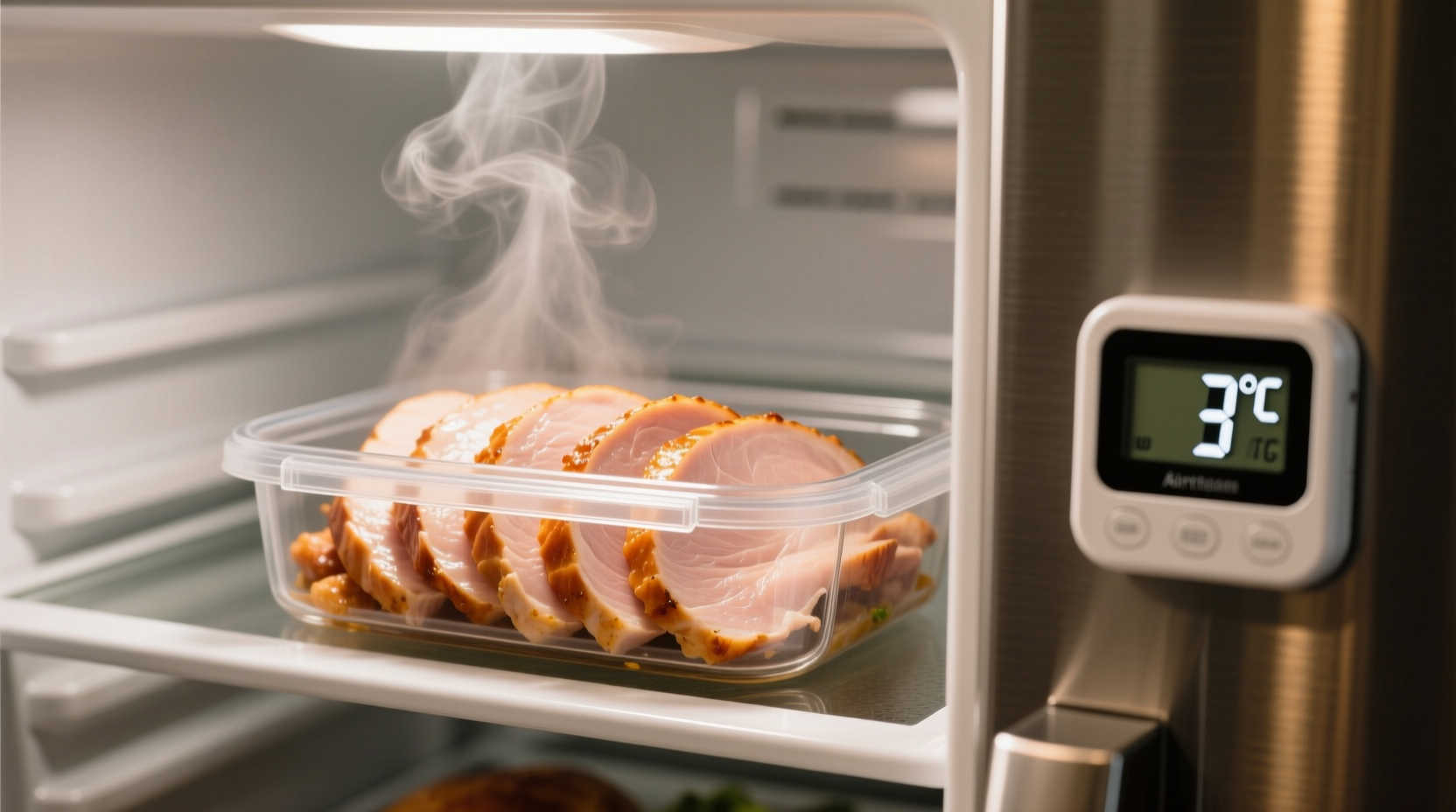Nothing spoils post-holiday joy faster than food poisoning from improperly stored turkey. As a culinary safety expert with years of professional kitchen experience, I've seen how simple storage mistakes turn festive meals into health hazards. Let's cut through the confusion with science-backed guidelines you can trust.
The Science Behind Turkey's Refrigeration Timeline
Understanding why cooked turkey has a limited shelf life starts with bacterial behavior. Pathogens like Salmonella and Staphylococcus aureus multiply rapidly in the "danger zone" between 40°F and 140°F (4°C-60°C). The USDA Food Safety and Inspection Service confirms that cooked poultry enters this risk zone within hours at room temperature.
Research from the USDA Food Safety Education shows that dividing large turkey portions into shallow containers accelerates cooling, reducing bacterial growth by up to 75% compared to storing whole birds.
| Storage Method | Recommended Duration | Risk Level After Expiration |
|---|---|---|
| Refrigerator (40°F or below) | 3-4 days | High risk of foodborne illness |
| Freezer (0°F or below) | 2-6 months | Safe indefinitely (quality degrades) |
| Room temperature | 2 hours max | Extreme risk after 2 hours |
Maximizing Freshness: Your Step-by-Step Storage Protocol
Proper storage technique significantly impacts how long your cooked turkey remains safe. Follow this professional kitchen-tested process:
- Cool rapidly: Divide turkey into portions no thicker than 2 inches within 2 hours of cooking
- Container selection: Use airtight containers or vacuum-sealed bags (avoid aluminum foil alone)
- Temperature check: Verify refrigerator maintains 40°F (4°C) or lower with a thermometer
- Placement strategy: Store on middle shelf, never in door compartments where temperature fluctuates
- Label everything: Note storage date with permanent marker directly on container

Spoilage Detection: Beyond the Calendar
While the 3-4 day rule provides a safety baseline, always verify freshness using sensory indicators. The Centers for Disease Control and Prevention emphasizes that food poisoning bacteria often don't alter appearance or smell until dangerous levels are reached.
Check for these spoilage signs before consuming:
- Visual changes: Slimy film, unusual discoloration (grayish-green tinge)
- Odor test: Sour, ammonia-like, or rotten egg smells (trust your nose)
- Texture shift: Excessive stickiness or mushiness when touched
- Mold presence: Any visible mold means immediate discard (don't just cut off spots)
Special Circumstances: When Standard Guidelines Don't Apply
Certain preparation methods and storage conditions alter the standard timeline. These context boundaries require special attention:
- Turkey with gravy: Consume within 2 days as the liquid environment accelerates bacterial growth
- Stuffing inside turkey: Discard immediately if not removed within 2 hours of cooking (dangerous temperature trap)
- Pre-sliced deli turkey: Follow package "use by" date (typically 3-5 days after opening)
- Leftover turkey sandwiches: Consume within 1-2 days due to additional ingredients introducing moisture
Freezing for Long-Term Safety
When you can't finish turkey within 4 days, freezing preserves safety while maintaining quality. Follow these professional freezing techniques:
- Wrap portions tightly in freezer paper or vacuum-seal to prevent freezer burn
- Remove as much air as possible from storage bags
- Label with contents and freezing date (use within 4 months for best quality)
- Thaw overnight in refrigerator – never at room temperature
Safe Reheating Practices
Proper reheating destroys any bacteria that may have developed during storage. The FDA Food Code requires cooked poultry to reach 165°F (74°C) internal temperature when reheated. Use these methods:
- Oven method: Cover with foil, heat at 325°F until thermometer reads 165°F
- Stovetop technique: Simmer in broth to maintain moisture while heating
- Slow cooker approach: Heat on high setting until 165°F is reached (minimum 2 hours)
- Never partially reheat: Complete the process in one session to avoid temperature danger zones
When in Doubt, Throw it Out
Food safety experts universally agree: if you're uncertain about turkey's freshness, discard it immediately. The USDA reports that 1 in 6 Americans get sick from foodborne illnesses annually, with poultry being a leading cause. Your holiday memories aren't worth risking salmonella poisoning.











 浙公网安备
33010002000092号
浙公网安备
33010002000092号 浙B2-20120091-4
浙B2-20120091-4